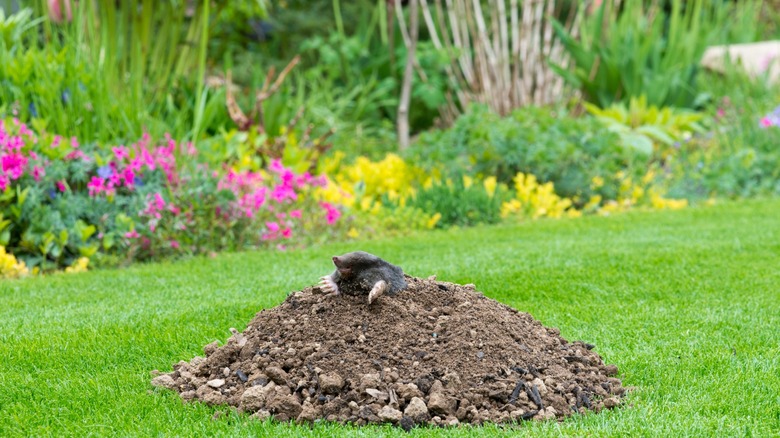Gopher Vs. Mole: Which Pest Is Destroying Your Garden?
If you've got mysterious mounds of dirt appearing in your yard, you're likely dealing with one of either two garden rodents: moles or gophers. These critters might seem similar at first glance, but knowing the real culprit can be half the battle, giving you the upper hand in managing the mayhem. First, let's talk size. Moles are generally smaller — no more than 8 inches long — whereas gophers can measure up to 12 inches long.
While both animals can disrupt your lawn, gophers take the cake when it comes to destruction. They're architects of the underground world, capable of creating hundreds of mounds within a year, far outdoing their mole counterparts. The solitary nature of gophers might make them sound less intimidating, but don't be fooled. One gopher can do a lot more damage than just building mounds. So, when weighing the nuisance levels of moles versus gophers, the latter usually comes out as the more disruptive and economically damaging culprit.
That said, to truly understand whether a mole or a gopher is behind the chaos, it's important to be savvy about these distinctions. Getting this initial identification wrong sets you on a path of wasted time, effort, and money, causing further frustration. Choosing the wrong intervention method — whether's trapping, fumigation, or repellents — can leave you stuck in a seemingly endless battle with these pesky diggers. This mistake could further stress your already besieged lawn, making recovery much more challenging.
Behavioral differences between moles and gophers
Understanding the unique behaviors of moles and gophers can help you tackle your garden woes more effectively. So, what sets these critters apart? Let's start with gophers. The mounds they build often have a unique shape, sometimes resembling a crescent. The entrances to their burrows sit off to one side of their mound, which can range from 25 to 50 centimeters in diameter. Gophers aren't just avid diggers; they're also notorious for their destructive capabilities. They can munch through cables, erode soil, and feast on plant roots.
Unlike gophers, moles produce mounds that look like mini-volcanoes, usually with a hole in the middle. Their mounds typically have a diameter of 5 centimeters, which is significantly smaller than those of gophers. Their ability to build tunnels is another defining feature — their tunnels usually appear as raised ridges on the surface of your lawn. Step on one, and you'll notice a spongy texture beneath your feet. As for feeding, moles aren't plant eaters; their diet mainly consists of worms and insects.
However, their relentless tunneling can loosen the soil around plant roots, stunting their growth. In summary, while moles may spoil your yard's aesthetics with their elaborate networks of tunnels and mounds, gophers tend to cause more practical damage and are generally more harmful to your garden.
How to deter moles and gophers
So, you've identified your underground foe, and now you're ready to take action. Getting rid of moles is all about eliminating their food sources. Pesticides can be your ally here, killing off the insects and worms that moles feast upon. When dining options dwindle, moles usually vacate the premises. Alternatively, mole-specific repellents are available, although their effectiveness is hit or miss. If gophers are your problem, fumigation is a prime option. Because their burrows are more deeply set, the gas is less likely to escape, making the process far more effective.
Just make sure you strictly adhere to safety guidelines when using fumigants.If you're looking for a more organic approach, planting gopher-resistant plants or setting up underground fencing may help. You can also consider natural repellents like garlic and castor oil. These can help deter both moles and gophers. However, natural options often require considerable effort and aren't always 100% effective.
Now, if you're more hands-on, you might opt for traps. Just keep in mind that trapping works but demands your consistent attention, including daily checks to see if you've caught your culprit. Should you go the trapping route, you'll need different traps for moles than you will for gophers because of their distinct burrowing habits. Successful trapping really hinges on how well you understand these pests' behaviors. Moles tend to stay closer to the surface, so they will require scissor traps. On the other hand, gophers dig deep and require pincher traps.


